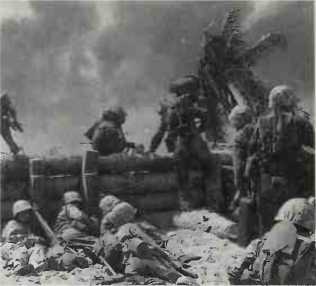Great armies could pivot. Whilst it had long been Russia’s policy to deprive her own frontier zones of good roadh'ail communications, East Prussia in particular was served by a carefully laid-out rail network tied into the German system; double-track lines ran East-West to permit rapid movement between fronts, and laterals allowed formations to be switched from flank to flank. To make matters worse for the invader, the gauge of the German system was narrower than the Russian.
The Russians deployed two armies against East Prussia; the First (Vilna), under Rennenkampf, was drawn up on the line of the Niemen, and the Second (Warsaw) under Samsonov was deployed to the south. Both were under overall command of the ineffective Zhi-linsky in Warsaw. Rennenkampf was ordered to advance first, to draw the German Eighth Army forward; Samsonov would then attack from its southern flank.
On August 17, Rennenkampf crossed the frontier with six infantry and five cavalry divisions. Prittwitz met him in an encounter battle at Gumbinnen on August 20 where the Russians got the upper hand but failed to follow up. Prittwitz, hearing that Samsonov had now crossed the southern frontier, lost his nerve, ordered a general retreat to the line of the Vistula, and was promptly dismissed by Moltke, who recalled the respected Hindenburg from retirement to command Eighth Army, with Ludendorff as his cos. They arrived in East Prussia to find that Eighth Army’s head of operations, the brilliant Col Max Hoffmann, had cancelled the withdrawal and drafted plans for a counterstroke which Ludendorff at once ratified (and for which he subsequently claimed the credit).
Samsonov continued to blunder forward, wheeling left and losing cohesion, whilst Rennenkampf, now held by only a screen of German cavalry, remained inert. Using the railway system, the Germans concentrated Eighth Army against Samsonov, now spread out over a 60-mile (96km) front with his right flank exposed. By August 27 the trap had been sprung: Russian Second Army disintegrated. Samsonov committed suicide; 92,000 Russian prisoners
Were taken.
Hindenburg now turned to Rennenkampf, who had halted with his right flank on the Baltic shore and his left at the southern end of the Masurian Lakes. The Germans closed with Rennenkampf on September 9-10, ignoring the pleas of the Austro-Hungarians to go to their rescue in Galicia. Driving in the Russian left flank. Eighth Army began to roll up the enemy line. Rennenkampf managed to extricate most of the First Army by hard marching, but lost over 100,000 men. German casualties were 10,000. MH.
Taranto, air attack on, (1940). Taranto is the main naval base in the south of Italy. In 1940 the British Navy planned a carrier strike on the Italian fleet in harbour there. The attack was to be made using the two available carriers, Illustrious and Eagle, but the latter was unserviceable and some of her aircrew were transferred to the newer carrier. Operation “Judgment” was launched on the night of November 11 with 21 biplane Swordfish torpedo bombers, Illustrious having approached within 170 miles (270km) of Taranto. Those aircraft which carried torpedoes went in just above sea level, while bombcarrying aircraft attacked from higher, as did those allocated to drop illuminating flares. The attack, mounted in two waves, was a complete success. Three Italian battleships were put out of action: Cavour (sunk although later raised), Littorio and Duilio (heavily damaged), plus damage to shore installations. Despite heavy flak, only two Swordfish were lost. This was the first great carrier victory, establishing British superiority in the Mediterranean for some time after — and providing some of the inspiration to the Japanese for the Pearl Harbor attack. DJL.
Taranto, landings at (September 9 1943). 1st British Airborne Division, carried in the ships of. 12th Cruiser Squadron, seized the port before the Germans could react to the Italian capitulation. The landings were unopposed, and enabled V Corps (Allfrey) to advance rapidly north to seize Bari and Brindisi to which the Badoglio government had escaped from Rome.

US Marines at Tarawa
Tarawa campaign (November 1943). The first move in the Central Pacific campaign was Operation “Galvanic”, the conquest of the Gilbert Islands, to provide air bases for the next “stepping-stone” in the Allied advance, the conquest of the Marshalls (see kwajalein-eniwetok). “Galvanic’s” major objectives were the atolls of Tarawa, Makin and Apamama.
Under the direction of the US Fifth Fleet (Vice Adm Spruance), Southern Attack Force (Rear Adm H W Hill) sailed for Tarawa with Marines of V Amphibious Corps (Maj Gen H M Smith), while Northern Attack Force (Rear Adm R K Turner) carried men of the 27th Infantry Division (Maj Gen R C Smith) to Makin. Apamama, virtually undefended, was secured by Marines of V Amphibious Corps Reconnaissance Company, landed by the submarine uss Nautilus on November 21.




 World History
World History









